Mason and Nash
My pal in Monterey filled me with envy the last few days. Car Week on the peninsula is starting, and there were at least three events already with the auctions starting today. The wildest one was:
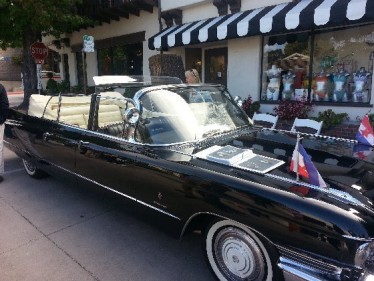
(“Big Daddy’s Caddie” ! … Big Daddy being Josif Broz Tito…. it reportedly was a gift, a token of esteem from….. the U.S. Govt., President Ike specifically…. 1960 custom job sold for $165 k recently…”Who’d a thunk it? Marshall Tito was a Car Guy. Photo Jim Mueller)
I was going to write about the Nash-Healy this morning, the “first post war purpose-built sports car,” but the whole day got away from me. Not my fault- I was intensely busy doing…well, I am not completely sure. But it certainly occupied my time.
The Healy had a special place in Dad’s heart. He had just moved over from Ford’s to Nash-Rambler to join George Mason’s team of eager (and talented) designers.
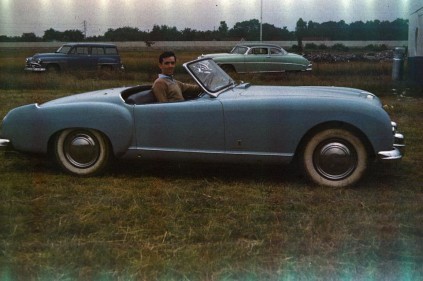
(Here is a contemporary mid-1950 picture of Raven at the wheel of what I think is a 1952 Nash-Healy roadster- the headlights have been moved from the fenders to the bug-eyed Rambler configuration on the grill, or so I surmise from the fenders. Photo WER).
Taking about the Healy would mean having to talk about the unlikely confluence of events that brought the car to life, which would include the equally unlikely story of George W. Mason.
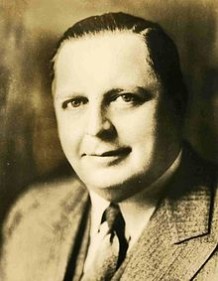
(George Walter Mason in his prime).
Mason hailed from Valley City, North Dakota, a little town on the Sheyanne (no, it’s not a typo!) River and one of the railroad towns that appeared with the transcontinental railroad system. The Hi-Line Bridge there that served the Northern Pacific Railroad was an engineering marvel, and might have inspired the young Mason to want to become an engineer. As a youth, he had jobs at a couple of the local garages, fixing cars and agricultural machinery.
He did so at the University of Michigan, my university, though Mr. Mason studied something useful while I did not. He was a thoughtful man even when he was young- his contribution to the American industrial miracle was devising an undergraduate degree that featured three years of engineering studies capped by one of business management.
It was a revolutionary concept, mixing sound business practice with solid engineering. It helped product a generation of well-grounded entrepreneurs.
Detroit was just up the road from Ann Arbor, and Mason was interested in the emerging auto industry and his cars first job out of school was at Studebaker. He bounced around the growing new industry before serving in the Great War.
After demobilization he was hired in 1921 by Walter P. Chrysler at Maxwell-Chalmers, which the energetic industry titan was developing the brand that would carry his name for a century.
Mason moved over to Copeland Products in the Roaring Twenties Motor City until he was hired away to become President of the Kelvinator Corporation, a leader in the parallel miracle of technology to the automobile, electric refrigeration.
Mason’s astute business sense helped quadruple Kelvinator profits, and guided the company to grow to number two in the industry, second only to the Frigidaire brand owned by Generous Motors.
Sometimes it helps to be in the right place at the right time. Refrigeration for food preservation was a solid business, even in the depths of the Great Depression.
Mason’s success amid the gloomy economic times made him a prominent industry star. When Charles W. Nash, of Nash motors, was looking to retire, he asked Walter Chrysler for recommendations to replace him. Chrysler responded that of course it was George Mason.
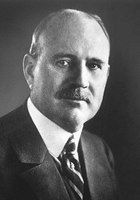
(Charles Williams Nash).
Just a word about how incestuous all this was. Nash had co-founded Buick just after the turn of the century with future Generous Motors icons David Buick and William Durant, and became Buick’s general manager in 1908.
Two years later he was hired away to salvage a debt-ridden GM, and returned it to profitability by 1914.
His insistence on plowing profits back into the business, rather than distributing them as dividends led to a stockholder revolt and he was unseated by former partner Durant in a company coup d’etat.
Nash then resolved never again to work for someone else. He bought out the Jeffery Motor Company in 1916 and renamed it for himself the next year. By 1919, he had sales of over 30,000 trucks and cars, partly due to the mobilization of industry to support America’s supporting role in the Great War.
In addition to running Nash Motors, Charles Nash was also president of the luxury car company LaFayette Motors until he decided to buy himself out in 1924.
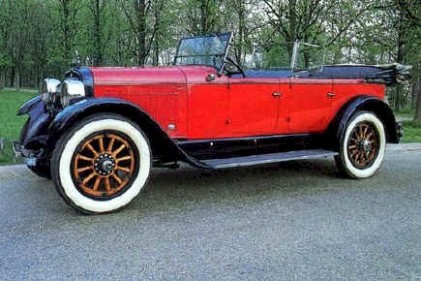
(1922 LaFayette134 V8 Rear Window Touring car. Lafayette Motors, Milwaukee, WI. You could say the LaFayette was the prototype of the Nash-Rambler Ambassador sedan we loved to take to the drive in).
Nash approached Mason to come over to his company and replace him. Mason initially rebuffed Nash’s offer, liking the position in the industry to which he had brought Kelvinator. Nash wasn’t taking “no” for an answer, though and offered to sweeten the deal. He asked what would convince Mason to make the move.
Mason replied, “if you take Kelvinator with me, you have a deal.”
It made sense. Nash saw that the auto industry was diversifying: Generous Motors owned Frigidaire, the transmission giant Borg-Warner Norge Appliance, and Walter Chrysler has added an air conditioning division to his empire, Airtemp.
The deal was announced in November 1936, and the merger formed the Nash-Kelvinator Corporation with George Mason as CEO. By 1940 and the years of the big defense build-up, Mason continued to grow Kelvinator’s market share and returned the Nash auto-trade to profitable status.
That was the company that Dad joined in 1950, and he met George Mason on many occasions, even though he was just a stylist and clay-modeler. Mason had hired a very talented young man named George Romney as his deputy, who was going to make history in a couple different career fields.
The reason I am not going to get around to telling you about the birth of the first post-war American sports car today, nor the fact that Dad went the other way from George Mason, leaving the Rambler auto styling shop to head up Kelvinator’s design studio.
We will have to see if we get around to that tomorrow. If I have time. It is so darned busy, you know?
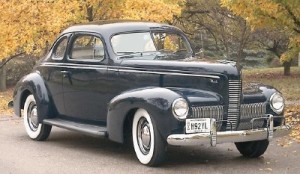
(1940 Nash Ambassador. Pretty sharp ride for the pre-war era).
Copyright 2014 Vic Socotra
www.vicsocotra.com
Twitter: @jayare303
